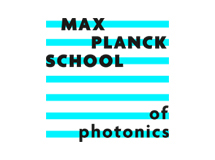
Flore Kunst: Group Leader. I am excited about the interdisciplinary character of non-Hermitian topology, which is relevant for condensed matter physics, optics, and even biological systems, while also being relevant both in theory and for experiment.

Alexander Felski: Postdoctoral Researcher. I am interested in phase transitions and their foundations in symmetry and topology, from classical to quantum systems. My background is in non-Hermitian field theories of quantum matter, PT symmetry (parity reflection and time reversal), and mathematical physics.

Julius Gohsrich: Ph.D student. For my PhD I was looking for a project in a novel field where I could utilize my previously acquired knowledge. Since I already worked with non Hermitian operators during my Masters project, Flore’s vision for the group was aligning perfectly with what I was looking for. At the moment I am working on non-Hermitian tight-binding models where the most prominent features are the non-Hermitian skin effect and exceptional points, both inherently non-Hermitian phenomena.

Maria Zelenayova: Ph.D student. Hi, I am Maria and my current interest lies in finding links between different methods that solve open quantum systems. Their common trait is that they are non-Hermitian (NH) and by looking at the spectra, symmetries or other topological properties I am trying to find similarities and differences. NH physics usually emerges when some type of loss is present and I find it fascinating that by studying and understanding topology in these NH systems we might be able to harvest dissipations for further scientific advances.

Carolina Martinez-Strasser: Visiting Ph.D. student from DIPC, Spain. I am currently researching non-Hermitian physics, particularly focusing on one-dimensional tight binding models. With a background in Nanoscience and Nanotechnology, I am enthusiastic by the potential applications of this research, some of them being anomalous wave propagation and light scattering. My work involves studying various non-Hermitian systems with and without topological states, which are resilient to external perturbations. Ranging from the characterisation of topological edge states, which can be challenging when bulk states accumulate at the boundaries due to the non-Hermitian skin effect, to the study of the skin effect itself, I want to pave the path for applications in quantum computing, photonics, and advanced sensing. In the future I am planning to extend my research to higher dimensional tight binding models.

Anton Montag: PhD student. I am working on non-Hermitian topology in strongly correlated systems. Non-hermitian topology is a rather new and growing research field in theoretical and experimental physics. To apply the techniques developed there to strongly correlated systems gives rise to novel phases of matter, that I will study during my PhD.

Florian Bönsel: PhD student. On my journey into research, I wanted to combine my interest in the quantum world with some insight from my master's project on noise-driven phenomena. Noise affecting a system, for example describing a dissipative system, should not only be perceived as a disturbance but must also be viewed from a positive perspective, as such "disturbances" are sometimes an essential ingredient for certain observed phenomena.
Here, in Flore's group, I want to investigate topological phases of non-Hermitian systems when additionally influenced, such as through incident light. A better understanding of this could also enable the active control and manipulation of these systems. Therefore, there is an unpredictable but a significant number of future applications. For instance, materials that exhibit useful properties when tuned to an exceptional point. This makes research in this area so exciting.
Former group members
Sharareh Sayyad (Postdoctoral researcher)
Quentin Levoy (Master student)
Daniel Borrero-Landazabal (Master student)
Jacob Fauman (Master student)
Contact
Marquardt Division
Kunst Junior Research Group
MPI for the Science of Light
Staudtstr. 2
D-91058 Erlangen, Germany





